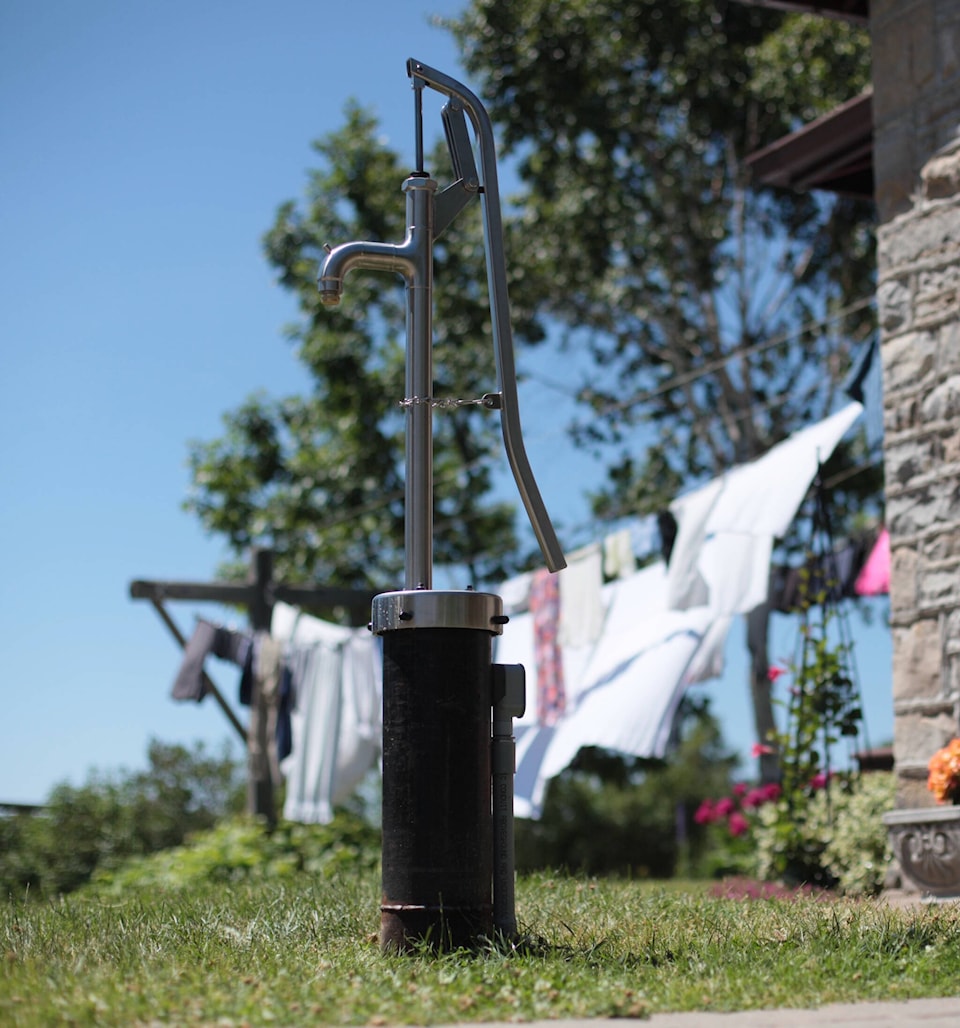Q: Is it possible to install a hand pump in the same well as the electric pump that serves our house? I don’t want to rely completely on our electric pump for the water we rely on. Water level is about 30 feet below the surface.
A: Yes, this is possible, and a few years ago I did this same thing at our place. The hand pump I chose is made by a company called Bison, and the unit is designed to work alongside a standard submersible water well pump. It sure is nice to know that we always have access to water.
The first thing to understand is that water cannot be drawn upwards more than about 22 feet maximum. Less than this and you can use a simple pump that operates by sucking the water up.
In your case you’ll need to use a pump that puts a pumping chamber down in the well below the lowest expected water level. This pumping chamber is connected to the pump and handle up top by a rod. The rod works the pumping chamber, and the pumping chamber pushes the water up from below. The only question is how far down to put the pumping chamber? It doesn’t necessarily need to go all the way down to the bottom of the well, but just 10 feet or so below the lowest expected water level.
In my own case my electric submersible pump is within 5 feet of the bottom of the well, with the pumping chamber of the hand pump somewhat higher than this. Visit baileylineroad.com/hand-pump-install for a video tutorial of the deep well pump installation we did ourselves.
No Heat from Radiators
Q: Why don’t I have any heat coming from the radiators in the top floor of our house? This has happened before and bleeding air from the radiators solved the problem. This time there’s no air coming out when I open the bleed screws even though the pressure gauge on my system shows 10 psi of water pressure.
A: It’s too bad heating systems never act up in the summer! It sounds to me like you’ve got air in the system preventing hot water flow. Air is most likely to build up in the highest radiators, which is consistent with your experience. I also suspect that your pressure gauge might be giving a false reading. If there really was 10 psi of pressure in your system, then water or air or both would come out when you open the bleed screw. You’re on the right track with your approach, but you just need to build some internal pressure first.
Many hot water radiator systems have a valve that lets you add water from the household supply. Do you know of the valve that would allow this? It’s probably near that pressure gauge you mentioned since you need to watch the gauge as you’re adding water. Systems typically operate between 15 psi and 30 psi. I’d try adding more water to the system, bringing the pressure up to 15 psi for now, then try bleeding again. I suspect you have air in the system and not enough pressure (or perhaps none at all ñ faulty gauge) to force it out. It’s not unusual to have to add water to these systems from time to time, so don’t worry. After you’ve bled air from the system, top it up to 15 psi and it should operate well.
There are devices that can be installed in systems like yours to catch air bubbles before they build up within radiators. I have hot water radiators at my house, and after installing a bubble catcher four years ago I haven’t had to bleed air from any radiators since.
Steve Maxwell’s favourite heating system uses cast iron radiators. Visit him online at BaileyLineRoad.com for home-grown Canadian home improvement and woodworking articles and videos.
